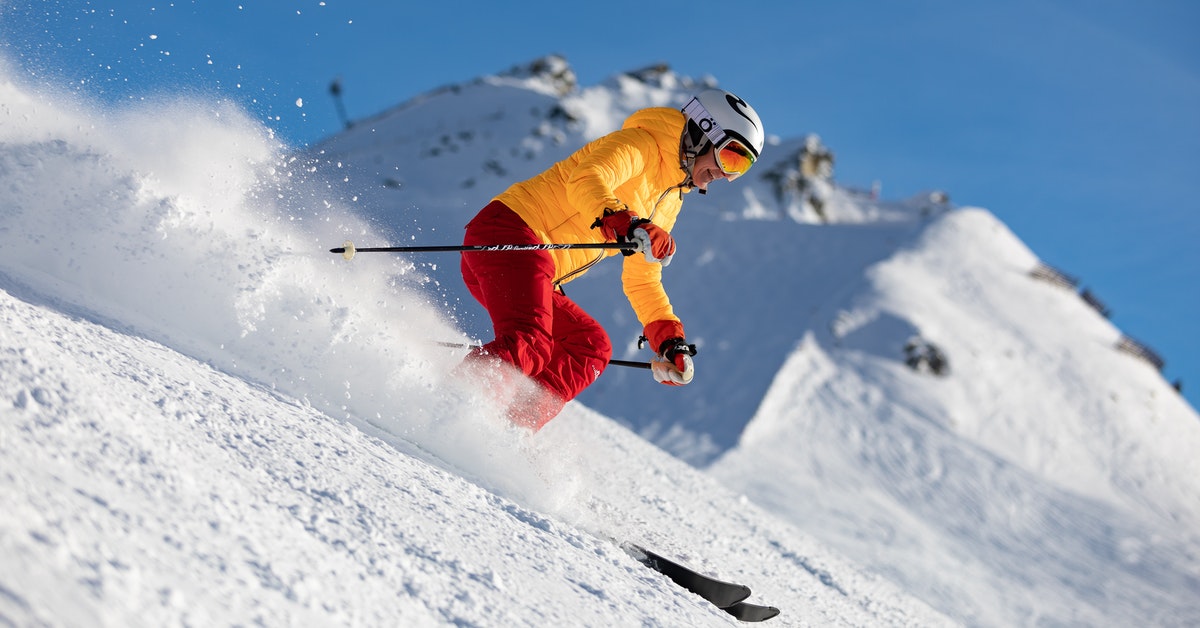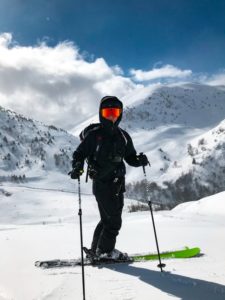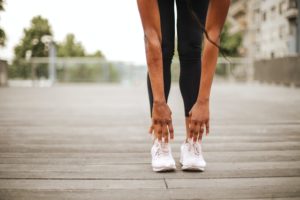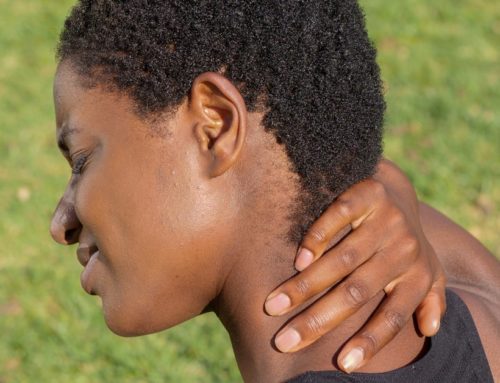Cold temperatures and snow on the ground mean that winter sporting season has officially begun. Participating in winter sports can be great for your physical and mental health, but our bodies need extra care when temperatures drop. Here are three steps that will keep you injury-free this winter:
1. Wear the Right Gear
When we get cold, our muscles and blood vessels contract, sending blood to our vital organs and away from our extremities. This can lead to stiffness and increase your chance of injury during exercise. One way to combat this is to hold in as much of your body’s warmth as possible. This can be tricky because while you may start out feeling cold, you will warm up quickly after becoming active. Dressing in layers will allow you to be warm before you start working out and avoid overheating once you get moving.
Look for clothing that is moisture-wicking and breathable but also warm. Wear your thinnest layers on the inside and your thickest layers on the outside. Don’t forget to cover your head and hands. A good pair of gloves will allow for some freedom of movement while still keeping your fingers cozy. Beanies are a good alternative to hoods because they won’t block your peripheral vision and they stay on better during fast sports like skiing. If you will be downhill skiing or ice skating, wear a helmet to protect yourself from head injuries. Footwear is the most important part of any sporting gear. It’s worth it to spend a bit extra on a pair of boots or shoes that are supportive, warm, and waterproof. Depending on what sport you are pursuing, there may be specialty footwear created just for your activity.
2. Do a Warm-Up
A thorough warm-up before exercise is always important, but it becomes even more essential in the winter months. The internet is a good place to start if you are unsure about how to warm-up. A search for “before skiing warm-up” brings up 133 million results! A good warm-up will work your whole body, with a special focus on muscles that will be used during the sport or workout you plan to do. Here are some basic exercises you can start with:
Power-walk: Before you hit the slopes, power walk while swinging your arms for about ten minutes, this will help warm up your whole body. Pair this exercise with a few of the ones below for a complete warm-up.
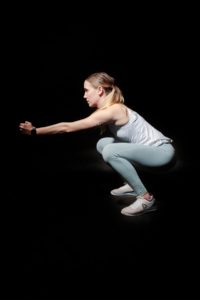
Air-squats: These are performed just like a squat in the gym, except you don’t need to use weights. Stand with your legs shoulder-width apart and arms at your sides. Slowly lower your glutes (buttocks) toward the ground as you lift your arms in front of you to shoulder level. Don’t let your knees go over your feet, and keep your spine and chest in a neutral position (not hunched forward or bent back). Once your thighs are parallel with the floor, slowly raise back up to the starting position and repeat the exercise ten to fifteen times.
Warming up your thighs and legs is especially important for snowshoeing and skiing.
Shoulder Circles: Stand up straight with your shoulders back. Now roll your shoulders forward by lifting them towards your ears, forward, back, and down. Reverse the process for a backward shoulder roll. Try to do ten of each. This will warm up your shoulders and upper back.
Arm Circles: Extend your arms to the side at shoulder level and begin moving them in a small, forward circular motion. Gradually increase the size of your circles until you are using your arms’ full range of motion. Arm circles help to increase circulation to your entire arm, counteracting the cold weather.

Lunges: Ice skating and skiing require you to glide over the snow using your inner and outer thigh muscles. Lunges will help to warm these muscles up so you can glide without injuring these sensitive areas. To side-lunge, stand up straight with your shoulders back and your feet shoulder-width apart. As you gaze forward, take a large step out to the side with your left leg. Now bend your left leg until your knee is at a ninety-degree angle. Your right leg should be straight. Push off your left leg and return to standing. Side lunges are especially good for working your inner thigh. Do at least five reps with each leg.
You can also do back or forward lunges by coming back to your starting position and stepping one leg either back or forward, then bending both knees so they are at a ninety-degree angle. (You’ll be kneeling on one knee with the other foot on the floor.) Doing a mix of these different types of lunges combined with air-squats will work out your whole thigh and glute area. Do enough reps to start to feel the exercise, but don’t push beyond that like you would during a workout.
3. Stretch
After you warm-up, it’s time to stretch out. Your muscles should be ready to let you be limber. Here are some simple stretches to try:
Knee to chest stretch: Either standing or lying on your back, interlace your hands under your right knee cap, and bring your knee as far towards your chest as you comfortably can, using a controlled motion. Hold the stretch for at least fifteen seconds and repeat with your left leg.

Hurdler stretch: Sit on the floor with your back straight and extend one leg in front of you. Bend your other knee so that your foot touches the thigh of your extended leg. Bend forward, reaching towards the foot of your extended leg, and hold your leg wherever you can reach (calf, ankle, or foot). Breath out and bend your elbows, lowering your chest towards your thigh. Hold for at least fifteen seconds, then repeat on the other side.
Upper body twist: Stand with your feet shoulder-width apart and your arms extended to the side, forming a “T” shape. Gently and slowly, twist your upper body from the hips to your right side as you breathe in. Breathe out and return to your starting position. Repeat this on your left side and then alternate between the two sides about ten times.

Triceps stretch: Stand up straight with your shoulders back and reach one arm over your head. Bend your elbow and reach behind your head toward your opposite shoulder. With your other hand, grip your bent arm right above the elbow and gently pull to stretch the back of your upper arm (triceps muscle). Try to keep your head upright. Hold for at least fifteen seconds and repeat on the other side.
Now you are ready to to go play in the snow! We hope you have a fun and safe winter, but if you do experience an injury, we can help. At Burkhart Chiropractic we offer innovative care for sports injuries, so you can get off the couch and back to doing what you love.
